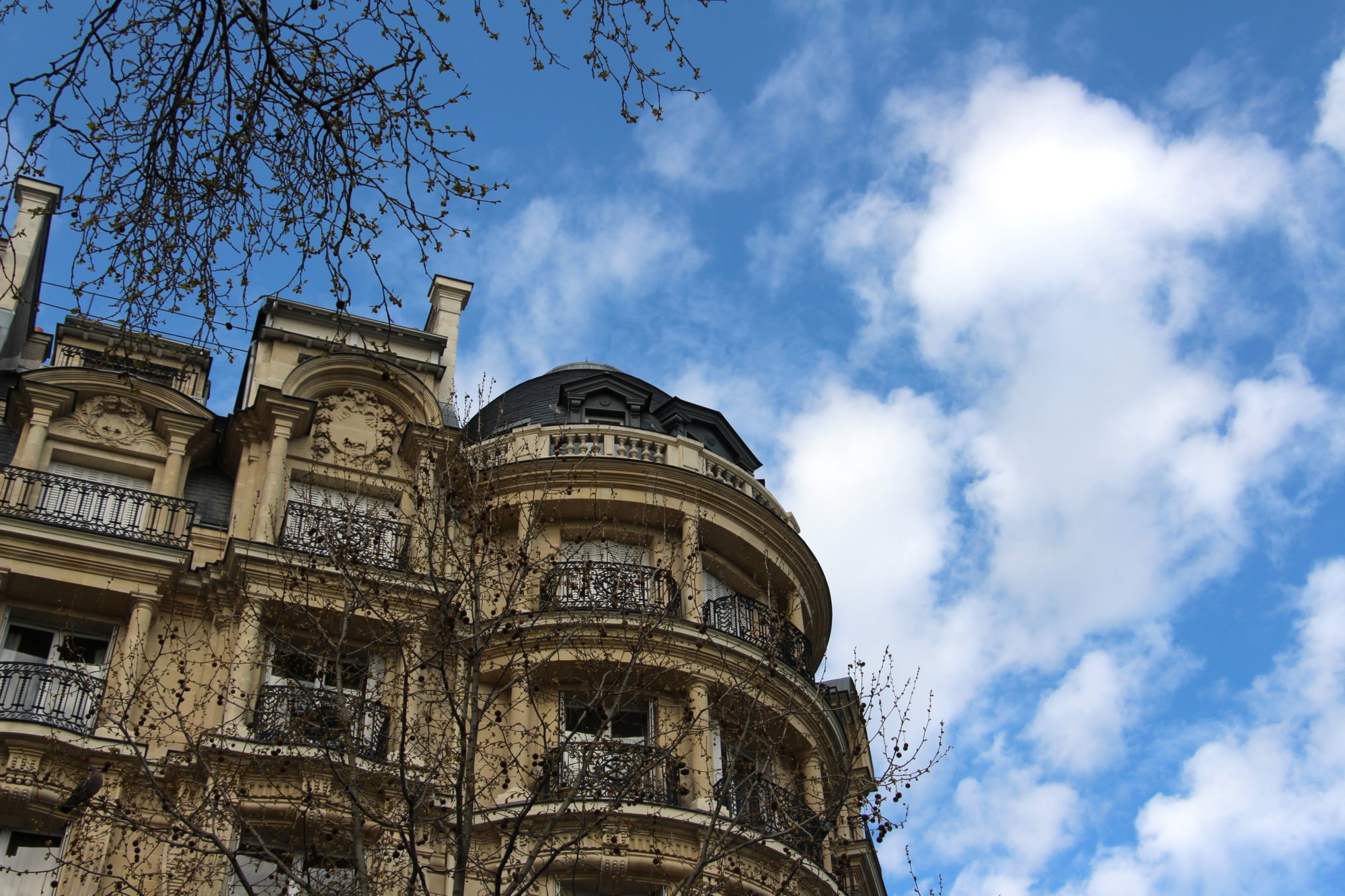1. I come from a city where we famously stare more at our shoes than at what’s going on around us. You can identify a tourist based on whether he or she is looking down or looking up: that’s one of the first things I noticed about my husband long before he was my husband. But while I’ve been in Paris for eleven years now, I think I may be a perennial tourist; there are just so many interesting things to see when you look up.
This, for example, is the roof of a typically Haussmannien building. Haussmann was the city planner who created Paris as we know it in the 19th century at the behest of Napoleon III, and he designed these buildings (six stories of limestone with iron balustrades and a slate roof) as the typical apartment building of the time. Many buildings built through Paris’ golden age follow the same format. All of them include a smaller seventh story underneath the roof, where Paris’ maids used to live (now Paris’ students). The small rooms (less than 90 square feet) generally don’t include toilets, which are shared on the hall, like in dorms. Some do now have showers, though. (Paris isn’t always as glam as you’d think!)
2. This fabulous art deco building is part of my walk to one of my regular haunts, the American Library. Situated on avenue Rapp in the 7th arrondissement, the Lavirotte building was designed by Jules Lavirotte and built at the turn of the century. A contemporary of Hector Guimard, who designed the Art Nouveau Parisian métro entrances, Lavirotte became famous when he, too, won a competition for building façades in 1901. (We love ourselves a contest in France).
3. This rather elaborate building is Paris’ city hall or Hôtel de Ville. The square in front of it has long been bustling with activity, from being one of the earliest public execution grounds (eesh) to hosting a summertime beach volleyball court and wintertime skating rink. But the rooftop of this building is worth a look too: the current 19th century building (reconstructed after a devastating fire) was completed in part by Théordore Ballu, the same architect who restored the Tour Saint-Jacques: the exterior of the new building was inspired by the 16th century French Renaissance town hall and is decorated with over 200 sculptures.
4. Paris is surrounded by a ring road – the périphérique – and much like we use cross-streets in New York, Parisians living on the outskirts of the city refer to where they live based on the gate or porte closest to them. While most of the portes these days are more metonymic than concrete, the Porte Saint-Denis is one exception. The gate is located at the site of one of the gates of the Wall of Charles V, though the gate as it currently stands was built in the 17th century to celebrate the victories on the Rhine during the Franco-Dutch War and the capture of Franche-Comté (which is why Comté cheese is now French – certainly worth celebrating).




